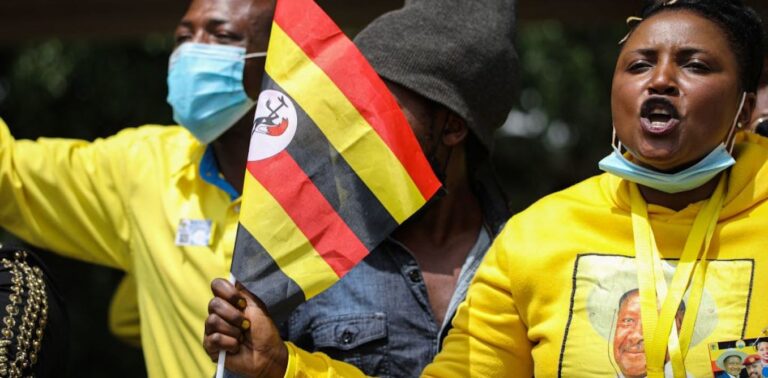Uganda first introduced gender quotas in elections in 1989, and has since increased the proportion of women in the Ugandan parliament to 34%. Currently, there are 189 women in the 557-seat parliament.
However, female politicians in Uganda remain underrepresented, constantly battling stereotypes that maintain the male-dominated status quo in politics, and voters who have become accustomed to the belief that because seats are reserved for women, they should not take part in contests for vacant seats.
One reason for this continued marginalization is that the country’s political parties have done little to empower women, but they are the first hurdle women must overcome not just to enter parliament, but to make their mark.
In reality, party affiliation is one of the most viable avenues for women to enter politics; the other option is to run as an independent candidate without a party affiliation. Political party support provides much-needed financial resources to run a successful campaign that are usually inaccessible to women. Thus, political parties act as gatekeepers, determining who can run for political office.
So women, like men, tend to gravitate towards parties that can provide them with the resources they need to campaign and take power. In Uganda, this tends to be the case with the National Resistance Movement. The ruling party has been in power for more than 30 years, and its popularity and apparent control over state resources make it the most viable path to parliament.
I am researching parliamentary politics in Uganda, with a particular focus on women’s participation. In my recent dissertation, I explored political parties in Uganda and sought to identify the status of women within them. I examined the power structure of six of the 26 registered parties using party constitutions and other documents that indicate party structure. I studied the National Resistance Movement, the Democratic Party, the Forum for Democratic Change, the Alliance for National Transformation, the Uganda People’s Congress and the National Unity Platform.
Read more: Tanzania’s political parties have few women in leadership and candidate lists: some solutions
My findings show that political parties still have a long way to go to improve the status of women within their ranks. Most political party constitutions mandate a minimum of 40% female representation within their ranks, but almost two decades since Uganda became a multi-party state, not a single party has delivered on this promise. My research found that the average female representation is below 30%.
We also found that Uganda’s multi-party system gives women a symbolic presence in the political system. Their presence in political parties is meant to give the appearance of gender equality. However, there are limited efforts to address the barriers that prevent women from effectively participating in politics. This results in “othering” women rather than allowing them to actively participate.
For example, in Uganda’s 2006 elections (the first held under the country’s new multiparty system), the ruling National Resistance Movement party politicized quotas during the election campaign, with party leaders emphasizing that women should be grateful to them for helping to increase women’s participation in parliamentary politics.
In my view, this promoted women’s dependency on the regime and portrayed them as victims of nepotism.
Inherent inequality
Political parties show gender inequality in their structures and processes: different tasks and positions are assigned to men and women. There is a division of roles, for example the position of party leader is often held by a man and deputized by a woman.
In the National Resistance Movement, the second vice-chairman has always been a woman. However, the party’s overall organisation remains largely gender-neutral and male-dominated: for example, in the Central Executive Committee there is only one woman out of nine members.
Read more: Burundi’s quota for women politicians has had mixed results, but is no reason to scrap it
Party structures also reinforce traditional belief systems regarding acceptable behavior for politicians. Women’s leagues and women’s sections, intended to promote women’s political participation and champion women’s issues within parties, are often used for care and social issues.
The case of Uganda illustrates the second-class status of women in political parties.
My research found that although women’s leagues were established in party structures, their duties and rights were not detailed. In most cases, the activities of the women’s leagues were controlled and approved by the party executive. They were mainly used for logistical support and to mobilize female supporters during election campaigns. If party leaders only met quarterly or twice a year, it was unlikely that they would have the time to thoroughly consider women’s issues or include them on the agenda.

